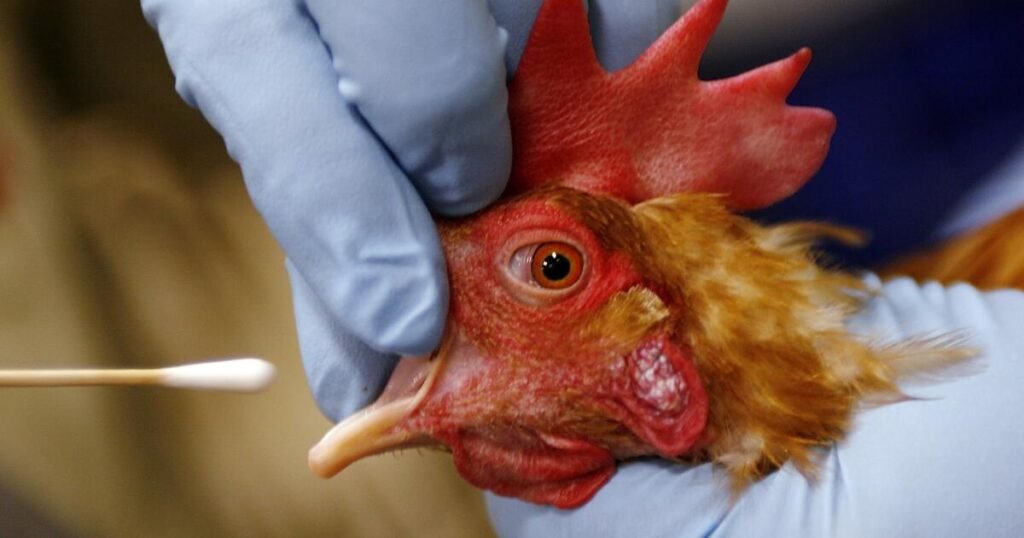Federal authorities suspect a live bird market in San Francisco may be the source of the avian influenza virus in wastewater samples from the area.
Days after health inspectors reported finding suspected avian influenza virus particles at a sewage treatment plant, federal authorities said they were investigating a chicken market near the facility.
San Francisco Public Health officials reported last month that state investigators detected H5N1 — a subtype of avian flu circulating among U.S. cattle, poultry and wild birds — in two chickens at a live chicken market in May. Officials also noted that they had found the virus in city wastewater samples collected around the same time.
WastewaterSCAN, an infectious disease surveillance network run by researchers at Stanford University, Emory University and Verily, the life sciences division of Alphabet Inc., recorded two new viral “hits” in wastewater samples collected on June 18 and 26.
Nirav Shah, principal deputy director of the US Centers for Disease Control and Prevention, said the source of the virus in the samples had not been identified but that a live poultry market was a likely source.
Positive tests for the virus also came back in sewage samples from the Bay Area cities of Palo Alto and Richmond, and it’s unclear whether those cities have live-bird markets or stores where people can take live birds home or process them on site for consumption.
Steve Lyle, a spokesman for the state’s Department of Food and Agriculture, said live bird markets are routinely tested for avian flu.
He said on May 9 Although avian influenza was detected in San Francisco, no other positive cases of highly pathogenic avian influenza have been reported at live bird markets in the state during this outbreak.
The San Francisco Health Department referred all questions to the state.
Even if the state and city had missed a few infected birds, John Korsland, a retired USDA veterinary epidemiologist, seemed incredulous that a few birds could have a negative impact on a city’s sewage system.
“If you have a large number of infected birds, you’re bound to have some dead birds, but it takes a lot of bird droppings to be detected in a city’s sewage system,” he said.
“But the question remains: Has anyone sequenced it?” he says. “It makes me want to tear my hair out.”
He said genetic sequencing would help health officials determine the origin of the virus particles — whether they came from dairy cows or wild birds. Some epidemiologists are concerned that H5N1 could spread among dairy cows because they could be vectors through which bird and human viruses can interact.
But Alexandria Boehm, a professor of civil and environmental engineering at Stanford University and principal investigator and program director of WastewaterSCAN, said her organization is not yet “able to reliably determine the genetic sequence of H5 influenza in wastewater.” “We’re working on it, but the methods aren’t ready for prime time yet.”
A survey of businesses around a wastewater treatment plant in southeast San Francisco found a dairy processing plant and a warehouse store for a “member-only community that provides fresh raw and cooked meals for pets.”

